Low-wage workers have seen faster wage gains since the beginning of the pandemic. Two factors have played into this: a very tight labor market for “standing-up jobs” together with the rise in working from home and remote work for “sitting-down jobs.”
Wage gains have been higher for “standing-up jobs”
The U.S. labor market has experienced an unprecedented wage compression. Salaries at the lower end are rising faster than salaries at the upper end of the wage distribution for the first time in decades.
Following the Great Recession, low-skilled workers saw significantly lower wage gains than high-skilled workers, a result of a very weak labor market. That situation reversed during the pandemic. Workers in what we at Appcast sometimes call “standing-up jobs” – manual jobs in retail, construction, hospitality and food services – have seen faster wage growth since 2021 than workers in so-called “sitting-down jobs,” meaning office workers.
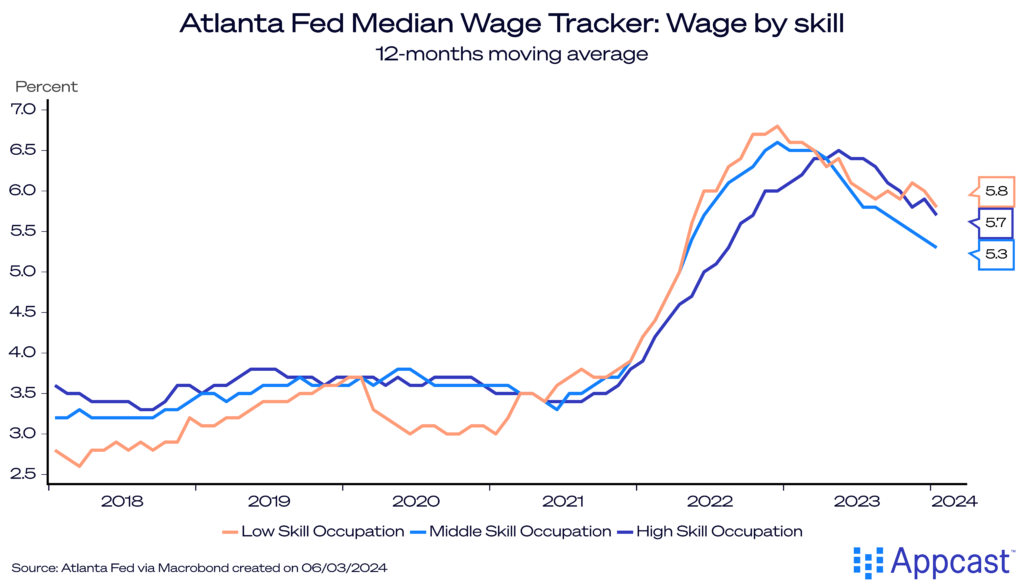
A recent research paper shows that the wage compression between 2019 and end of 2022 was so large that it reversed about one fourth of the previous four-decade long increase in wage inequality (measured by the wage gap between the 90th and 10th percentiles).
The big question is, of course, what has caused this unprecedented wage compression?
The benefits of a tight labor market
Almost every single measure currently points towards a historically tight (albeit slightly easing) labor market, which has been great for workers. The full employment economy has disproportionately benefitted low-skilled workers. The employment-to-population ratio for people with less than a high school degree has recently reached a new record high.
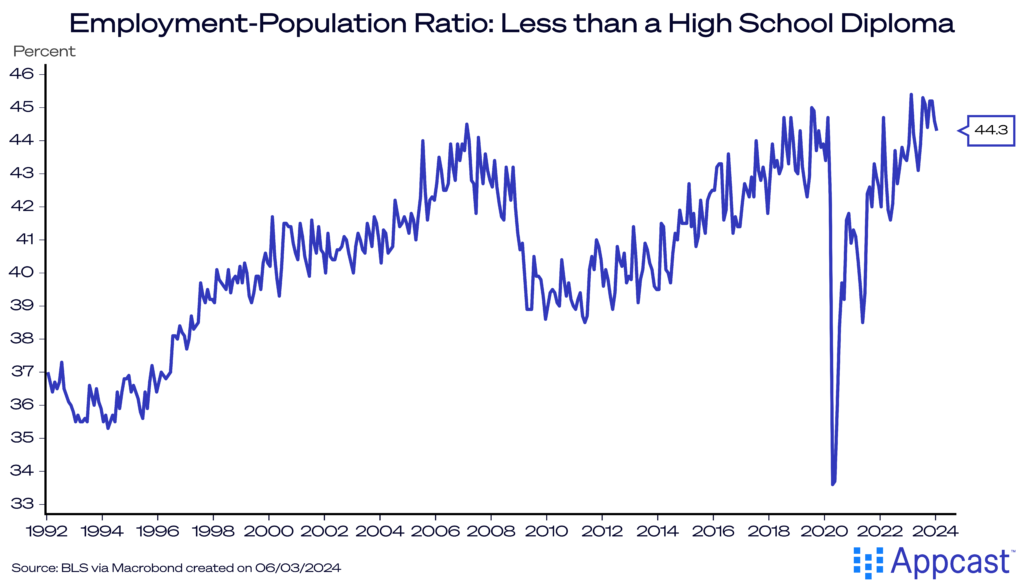
The COVID-19 pandemic led to massive shifts in demand. The entire hospitality and service sector suffered tremendously during the pandemic lockdowns. Simultaneously, online retailers like Amazon hired hundreds of thousands of workers as everybody ordered goods to their home en masse during lockdown. As vaccines were rolled out and the world opened with them, consumption shifted back to services. People were suddenly “revenge-spending” – basically trying to catch up on eating out, going to concerts, vacations, every activity they had missed out on for over a year.
The pandemic also led to a big reshuffle of employment across sectors. Employment in leisure and hospitality saw the largest decline during the first stage of the pandemic and has only just recovered.
However, other sectors that employ a lot of manual workers have more than compensated for the shortfall. Transportation and warehousing have gained some 800,000 jobs, construction more than 500,000 jobs, wholesale and retail trade some 400,000 jobs, and manufacturing some 180,000 jobs since early 2020.
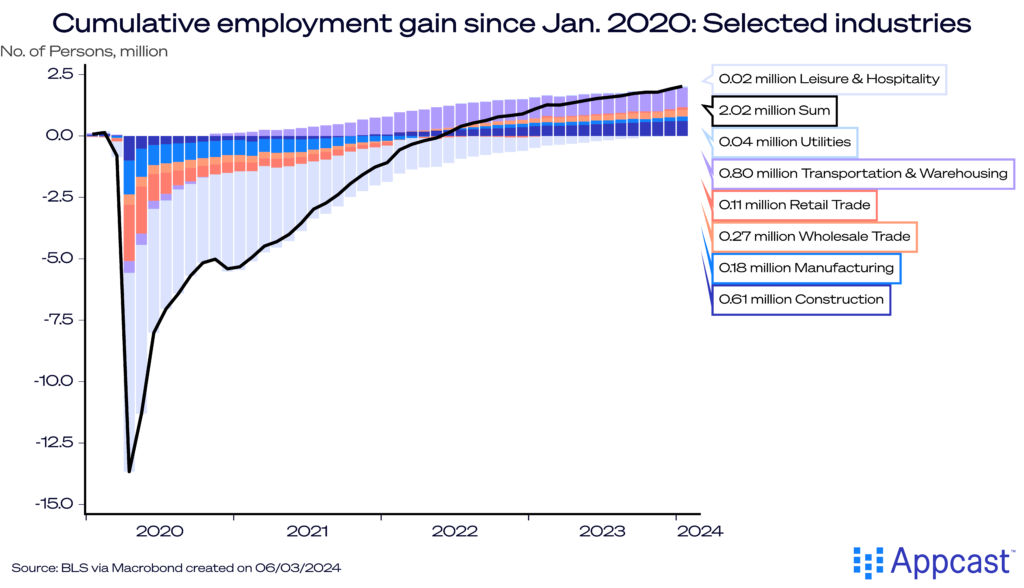
More favorable outside options for blue-collar workers
Significant job gains and better employment opportunities in general have led to more favorable options for workers in “standing-up jobs.”
Data from the New York Fed Labor Market Survey shows that the share of workers with less than a college degree expecting four or more job offers has basically doubled between since 2020.
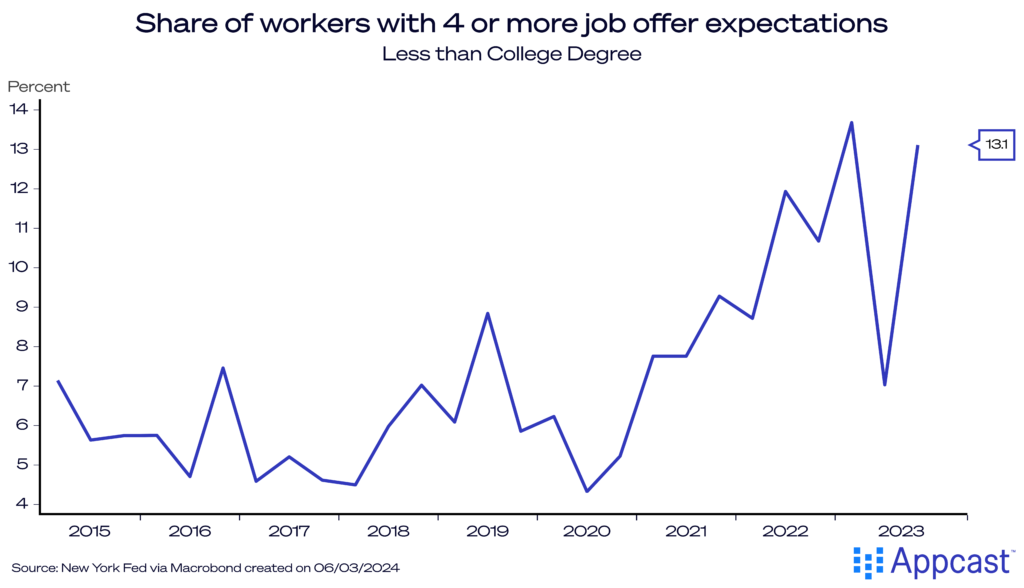
The expectation of a job transition has also markedly increased for workers with less than a college degree and workers whose income is lower than $60,000.
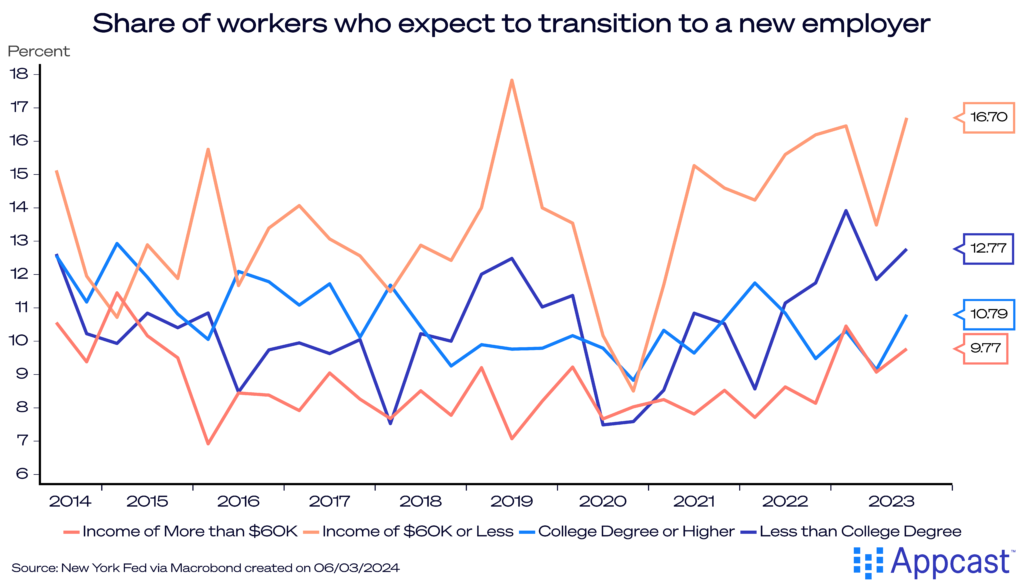
While quit rates have started to normalize, they remain elevated compared to the weaker labor market following the Great Recession, especially in industries that have a higher share of low-skilled workers, such as food and accommodation, retail trade, and construction.
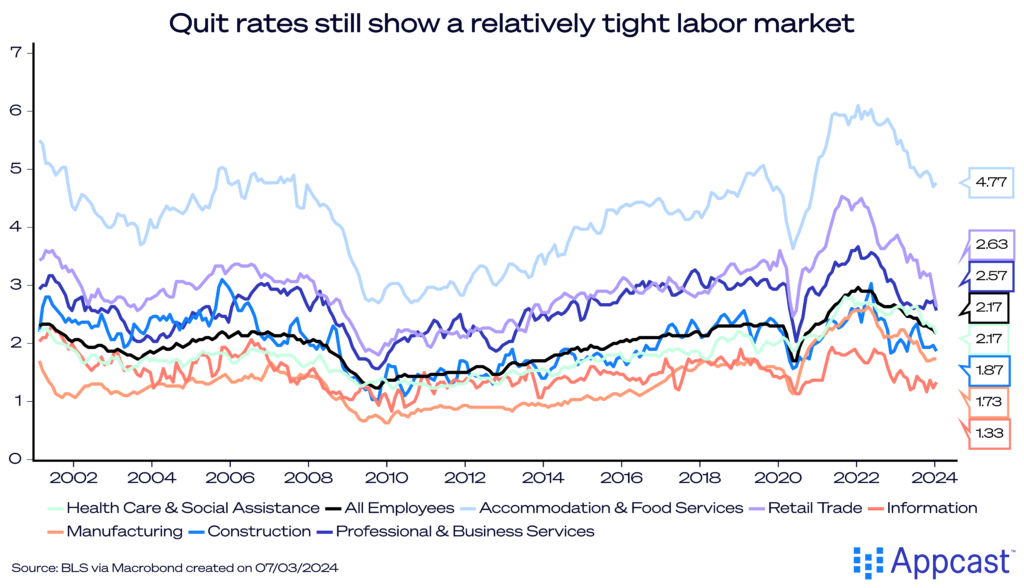
Workers without a college degree have experienced the largest increase in their wage expectations following a job offer. Compared to late 2019, job offer wages have increased by close to $8,000, or almost 20%, for workers with less than a college degree. For workers with a college degree or higher, the gain has been closer to $10,000, an increase of less than 14%.
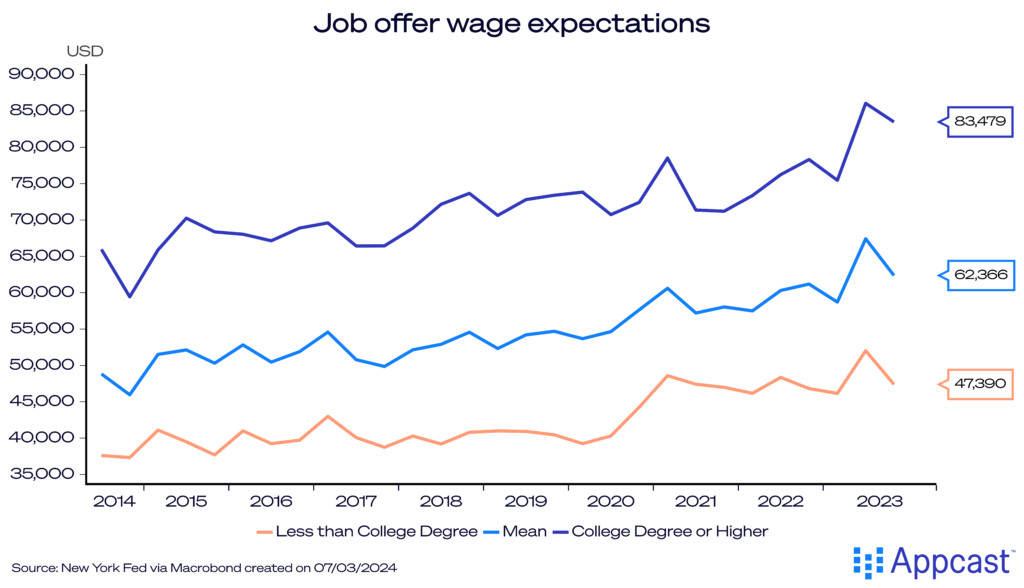
Workers in standing-up jobs have seen their bargaining power increase as better jobs alternatives to their current employment have become more available. Salaries for sitting-down jobs, on the other hand, have seen slower wage gains. The main reason for this is that the shift to remote work has put a lid on compensation for high-skilled workers.
The rise of working from home and remote work: A new equilibrium
The inception of widespread remote work during the pandemic has changed wage dynamics across industries.
Before 2020, about 7% of full-paid working days were remote in the U.S. When COVID first hit, remote work surged to close to 60% but subsequently declined again once people got vaccinated.
It’s becoming increasingly apparent that the labor market has now reached a new equilibrium in the remote/in-office divide. The share of working from home now stands at 30% of all full-time paid work – about a fourfold increase compared to the pre-pandemic state.
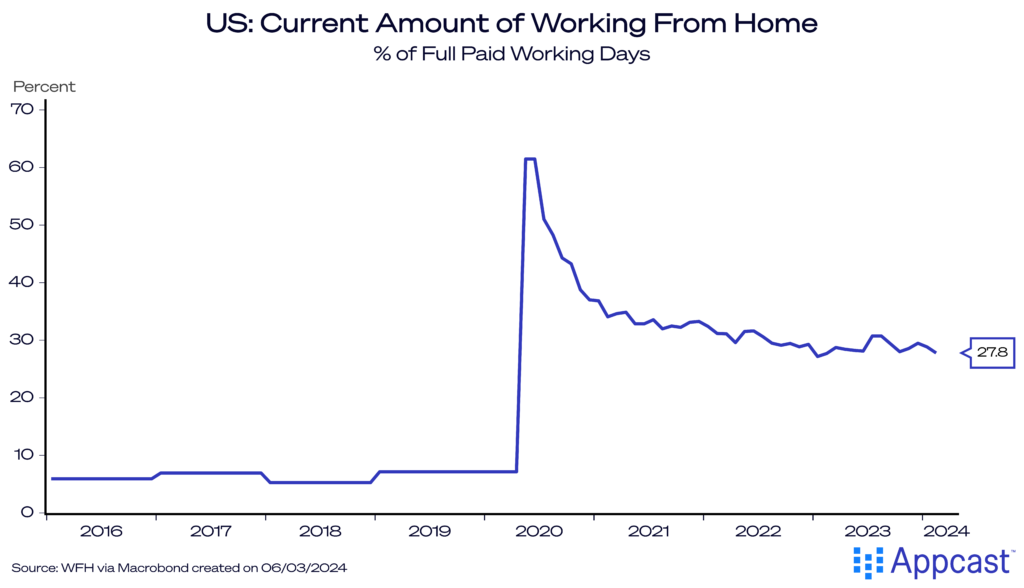
While there is a lot of big talk coming from CEOs to bring employees back to the office, workers increasingly start to “vote with their feet” and change jobs as soon as companies decide to abolish the hybrid work model.
Working from home (WFH) is an extremely valuable amenity for many workers in “sitting-down jobs.” Companies do not consider the time saved commuting to be a productivity improvement, but workers do. Average commuting times easily exceed 90 minutes per day or more in large metropolitan areas.
A three-day working from home policy can save an employee 4.5 hours of time that they can spend on household chores, childcare, or leisure. From a worker’s point of view, there are many obvious benefits related to working from home. Since it is such a valuable amenity, workers are willing to accept a considerably lower reservation wage for hybrid roles than for jobs requiring an in-office week.
From a company’s point of view, there can be many benefits too. Providing workers with a hybrid work arrangement increases worker satisfaction and reduces attrition. Simultaneously, it dampens compensation requests, given that work from home is considered part of the benefits package.
Moreover, it offers companies access to a larger worker pool: Parents (often mothers) who need to take care of their children and cannot physically be in the office that often, or workers who do not live close to an office location but are unwilling or unable to move are all on the table for these employers.
With the surplus of gains being shared between the employer and employees, the significant increase in WFH for white-collar workers has led to a clear dampening effect for wage demands compared to roles for which remote work is not feasible – often in the blue-collar space.
What does that mean for recruiters?
The job market for “standing-up jobs” has become more competitive as the full-employment economy has led to better job opportunities for this kind of work. Salaries for blue-collar workers have seen the largest wage gains. Workers in industries like hospitality, construction, retail trade, etc. are also transitioning to another employer more frequently than before the pandemic. A better compensation and/or benefits package is usually one of the top reasons to change jobs.
“Sitting-down jobs,” on the other hand, have seen much more moderate wage gains since 2020. One of the main reasons is the increasing prevalence of working from home. The amount of work done from home has now settled at about 28%, up from 7% before the pandemic. As WFH is an important amenity and parts of the benefit package for workers, it has helped moderate wage gains at the upper end of the income distribution.
For high-volume recruiters in low-skilled industries, life has gotten harder because the labor market has become much more competitive for these jobs.
On the flip side, recruiters in tech and other high-skill jobs are currently benefiting from a temporary weaker labor market. Wage pressures are less intense. The pool of available workers is larger than before, also thanks to working from home and remote work. However, this also leads to the new challenge of successfully navigating a company’s WFH policy.







